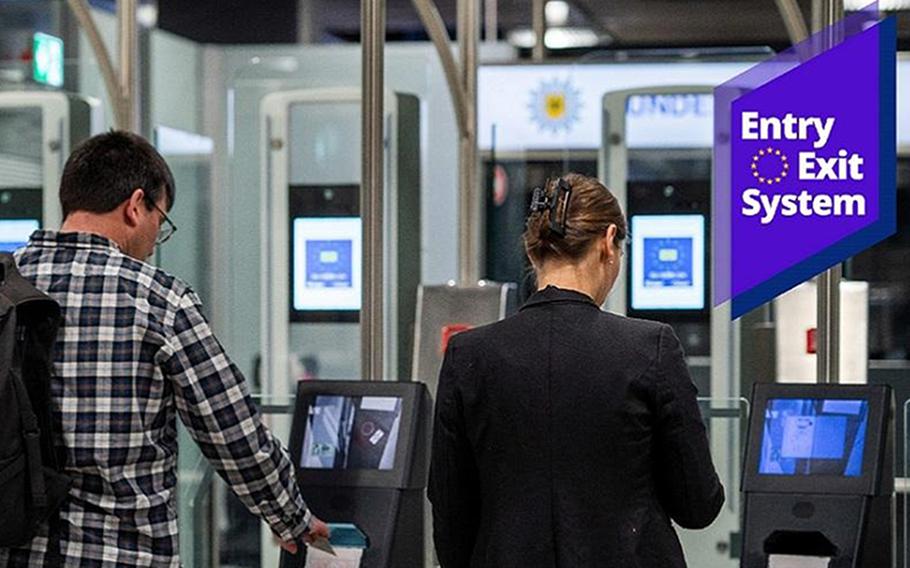
The new European Union Entry/Exit System is expected to begin gradual operations on Oct. 12, 2025. EES is an automated identification check system that digitally records the entry and exit of most non-EU nationals to Schengen Area countries, including some where large numbers of U.S. military personnel are stationed. (German federal police via European Commission)
NAPLES, Italy — U.S. military officials are warning service members that they may face lengthy delays and confusion at the border crossings of 29 countries in Europe this fall as the European Union implements a new traveler screening system.
The European Union Entry/Exit System is scheduled to roll out gradually beginning Oct. 12, with full implementation planned by April 10, 2026, according to the EU’s website.
American military members “assigned temporarily or permanently to a NATO country” aren’t subject to EES, even for leave, U.S. European Command said in guidance issued last week. Defense Department civilians, dependents and contractors assigned to a NATO country under the same conditions also are exempt, EUCOM said.
U.S. government officials are engaging with the EU, NATO allies and partners to ensure the EU issues guidance to the countries, known as the Schengen Area, that is “consistent with this position,” EUCOM said, adding that the exemption doesn’t apply to DOD personnel traveling on leave who aren’t assigned to a NATO country.
The stance appears to be based on NATO’s Status of Forces Agreement, which sets the rules, rights and responsibilities under which U.S. personnel may live and work in member countries of the alliance.
Under the SOFA, service members do not need a residence permit to enter and remain in a NATO country as part of their job. DOD civilians and dependents typically are issued a residence card or permit.
Officials also are reminding service members to show only their military ID and orders when on official travel to a NATO country, and not their passport, U.S. Naval Support Activity Naples said in a base newsletter Thursday.
It was unclear on Friday what documentation military dependents, and DOD civilians and contractors and their families would need to submit.
But in their guidance, U.S. officials advised that personnel should travel with all necessary documents, such as military ID, orders and personal and official passports. Passports should be renewed within six months of their expiration date, EUCOM said.
Service members also should allow for extra time between connections when traveling in Europe and check the Electronic Foreign Clearance Guide for the most up-to-date travel requirements, EUCOM said.
EUCOM expects to issue updated guidance closer to the scheduled October implementation date of EES.
EES is an automated identification check system that digitally records the entry and exit of most non-EU nationals to Schengen Area countries, including Germany, Italy and Spain, where large numbers of U.S. military personnel live and work.
It collects personal information, such as a person’s name and birth date, from travelers staying in a country 90 days or less. A facial photo and fingerprints are collected and are among data stored for about three years, according to the EU.
That data can be accessed by a range of European government agencies, including immigration and law enforcement authorities. It also can be transferred to another country under certain circumstances, according to the EU.
EU officials say the system makes the border check process more modern and efficient while helping authorities fight crime and terrorism.